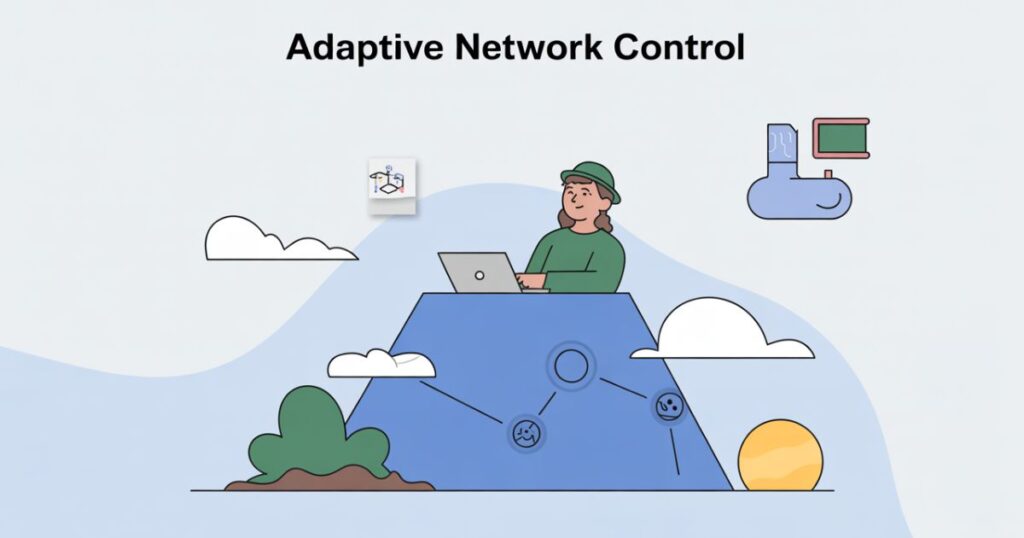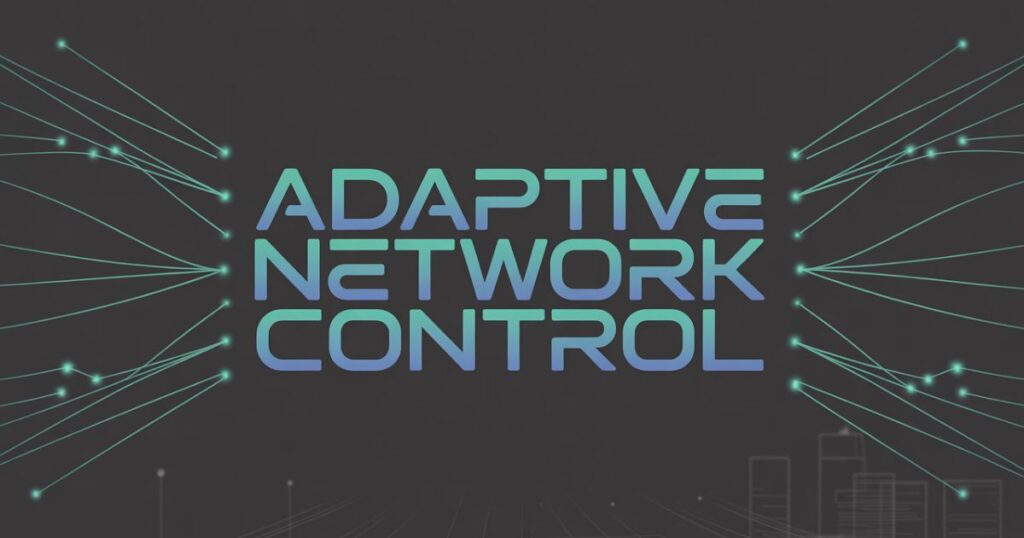In the speedy-converting digital era, companies need networks that are flexible, comfy, and sensible. Adaptive Network Control is defined as a set of smart tools, technologies, and algorithms that automatically monitor and modify your network settings. It analyzes real-time data to reactively improve a network’s functionality while also dynamically managing traffic during peak hours.
Adaptive networks have the advantage of being responsive to inner system usage or demand as well as external factors like user activity spikes. Unlike traditional static rule-based networks, these are capable of self-assessing needs and threats.
By integrating advanced tools like Artificial Intelligence (AI) and Machine Learning, organizations can strengthen performance, reduce risks, and improve user experiences. This shift is not just about technology; it is about creating self-optimizing, resilient networks that support future innovation.
Evolution and Historical Development
Networking started with traditional network management, which was static and manual. Engineers had to configure systems by hand, and updates were slow. This made it difficult to deal with cyber threats and network breaches that grew more advanced over time.
The rise of digital transformation of networks created the need for network automation and dynamic response to network changes. With cloud computing in networking, virtualization in networks, and 5G integration in networking, adaptive systems emerged. These solutions use self-learning systems and proactive vs reactive management to stay ahead of modern cyber risks.
Core Principles of Adaptive Network Control
The foundation of Adaptive Network Control lies in its ability to adapt. Networks now use real-time monitoring to detect network anomalies and apply dynamic optimization instantly. Instead of waiting for problems to occur, systems predict and adjust automatically.

Another key principle is self-healing networks. While Screw ups arise, the machine applies fault tolerance and recuperation strategies. This creates community resilience and reliability at the same time as making sure Quality of Service (QoS) optimization stays intact for give up customers.
Adaptive Network Security vs Traditional Network Security
Traditional models relied on firewalls and static defenses. They worked when attacks were simple, but today’s cyber threats move too fast. Static systems struggle with proactive vs reactive management and leave dangerous gaps in protection.
Adaptive Network Safety, but, uses Artificial Intelligence (AI) in networking, behavior-based danger detection and mitigation, and real-time monitoring.. This allows networks to adjust defenses instantly, reducing risk while maintaining performance.
Key Technologies Behind Adaptive Networks
Machine learning in networks plays a central role. It predicts failures, spots anomalies, and recommends fixes. Paired with Artificial Intelligence (AI), it forms the brain of adaptive systems.

Supporting technologies include cloud computing in networking, edge computing, and blockchain in network security. Together, they enable network automation evolution, traffic management and load balancing, and dynamic optimization across large and complex infrastructures.
Architecture of Adaptive Network Control
At the core of adaptive architecture are layered systems. Control loops feed back information to network performance monitoring tools, allowing quick adjustments.
Below is a simple breakdown:
| Layer | Function |
| Monitoring Layer | Real-time analytics and network anomalies detection |
| Decision Layer | Uses AI and ML for dynamic optimization |
| Enforcement Layer | Applies rules, ensures network resilience and reliability |
| Feedback Layer | Continuously improves via self-learning systems |
This structure ensures scalability in network management and self-optimization in networks.
Features of Adaptive Network Security
A major feature is network automation. Systems automatically adjust policies, detect cyber threats, and deploy patches without human delay.
Another is self-healing networks. With network resilience and reliability, they repair themselves while maintaining Quality of Service (QoS) in networks. This prevents downtime and protects critical systems like financial data centers and healthcare networks.
Benefits of Adaptive Network Control and Security
Organizations gain cost savings in IT operations by cutting manual work. Adaptive systems also provide better return on investment (ROI) thanks to fewer outages and faster performance.
They also improve cybersecurity posture by preventing network breaches. With proactive vs reactive management, networks stay protected while ensuring digital transformation of networks continues smoothly.
Common Use Cases in Different Industries
Healthcare networks use adaptive structures to protect touchy patient information and maintain HIPAA compliance. With self-healing networks, hospitals reduce downtime during emergencies.

Financial data centers rely on threat detection and mitigation to secure transactions and fight fraud. In smart city applications, adaptive systems manage traffic management and load balancing, powering efficient IoT and edge computing in real-time decision making.
Challenges and Limitations of Adaptive Network Control
Despite advantages, Adaptive Network Control is not without challenges. Implementation complexity makes it hard for smaller organizations without trained experts.
High prices, blended with ability shortages in cybersecurity posture, create hurdles. but, the long-term advantages like scalability in community management and price financial savings in IT operations outweigh the initial barriers.
How to Implement Adaptive Network Control Step by Step
The first step is a risk assessment of your existing systems. This identifies weak points and helps align strategies with future of network management goals.
Next comes selecting adaptive technologies, deploying AI, ML, and network automation evolution tools. Finally, organizations need to put money into continuous education and monitoring to make certain structures stay powerful in opposition to new cyber threats.
Future Trends in Adaptive Network Control and Security
The future points toward 5G technology, edge computing in real-time decision making, and blockchain technology in security. These will make networks even smarter and faster.
We’ll also see self-learning systems evolve into autonomous networks. These will combine self-healing networks with scalability in network management, leading to a fully adaptive, secure, and intelligent digital infrastructure.
Conclusion
Adaptive Network Control and Security represents the next chapter in the future of network management. By combining AI, ML, and network automation, organizations can achieve network resilience and reliability, reduce risks, and support massive digital growth.
As industries move into 5G integration in networking, smart city applications, and advanced cloud computing in networking, embracing adaptive solutions is no longer optional—it’s essential for survival.
FAQs
What is adaptive network control?
Adaptive Network Control is a modern system that uses AI and real-time analytics to manage, secure, and optimize networks dynamically.
What is an adaptive network?
An adaptive network is a self-learning, flexible infrastructure that adjusts to changing conditions to improve performance and security.
Is network access control worth it?
Yes, network access control is worth it because it strengthens cybersecurity, prevents unauthorized access, and protects sensitive data.
What is adaptive network hardening?
Adaptive network hardening is the process of strengthening network defenses through continuous monitoring and proactive security measures.
How do I harden my network?
You can harden your network by enabling firewalls, applying encryption, updating systems regularly, and using real-time threat detection tools.Would you like me to also create these FAQs in schema markup (JSON-LD) so they can directly help in Google rich snippets?



Pingback: How to Wire a 3 Way Switch: Complete Step by Step Guide - BBC Insider